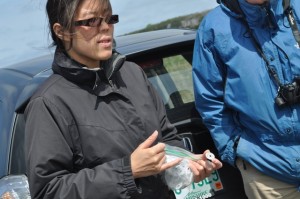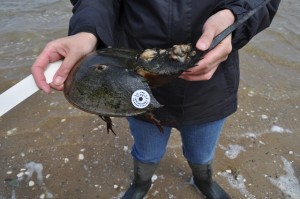Whether it’s the basic question, “What is that thing?” to “How have they managed to survive 400 million years?”, horseshoe crabs have always provoked curiosity. Now, with horseshoe crabs declining around the world, the more urgent question is, how can we help them?
Starting in 2000, Wellfleet Bay has been surveying local beaches for horseshoe crabs during spawning season to try to get a handle on local population status and to tag crabs to study their movement patterns.
As with most of our conservation and research programs, the surveys and tagging require a lot of help from volunteers. This spring, Helen Cheng, a graduate student in zoology at the University of New Hampshire, is coordinating the horseshoe crab monitoring. New volunteers are trained on how to perform surveys and the correct way to tag a crab.
Helen, who studies horseshoe crabs in New Hampshire’s Great Bay Estuary, says one of the questions driving her research is what stimulates a crab to breed. For a long time it’s been assumed their breeding was tied to astronomical high tides and the lunar cycles during May and June. Massachusetts has banned horseshoe crab harvests during those limited periods.
But Helen says her work has shown the old assumptions may not always hold true and that other factors, such as temperature, may be more important for triggering spawning. Solving this horseshoe crab mystery may be crucial to the animal’s survival, since the answer could result in more effective protections for these fascinating creatures.




